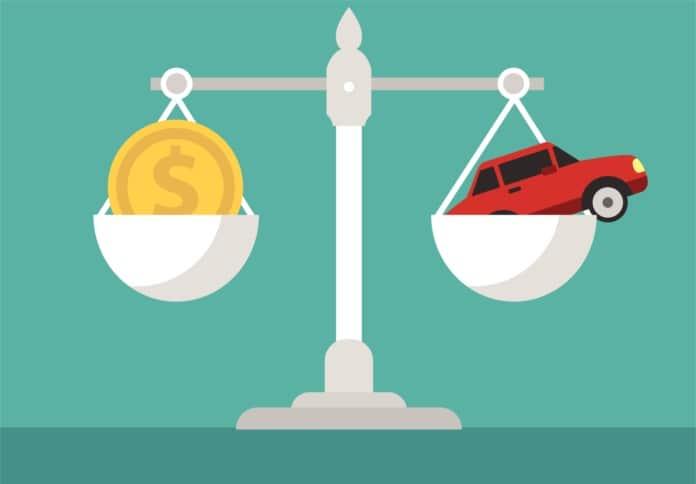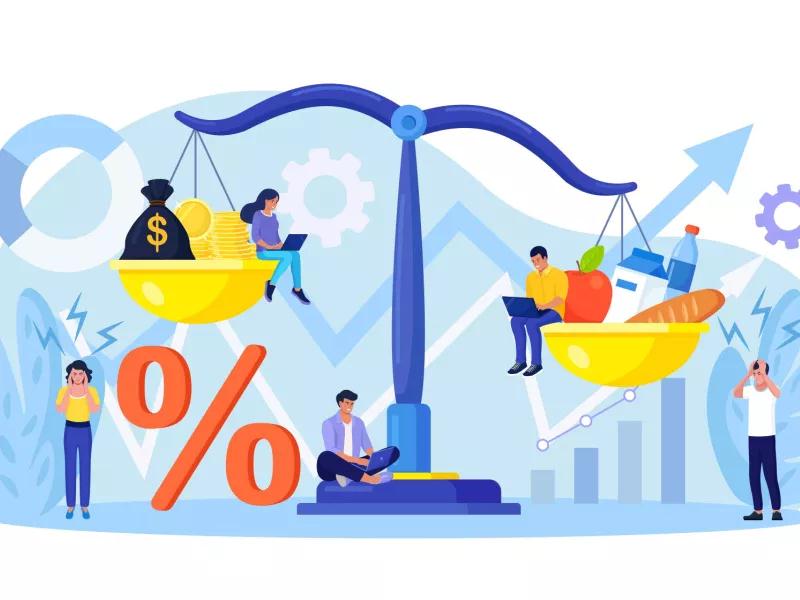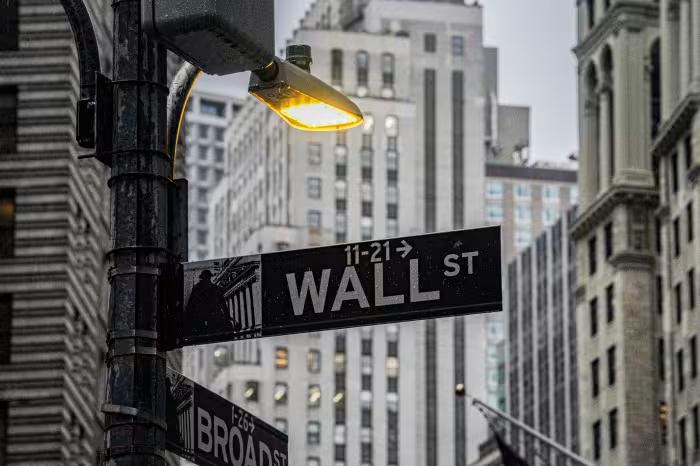Financial reports often do not show opportunity costs, but the concept can be used by making comparisons of expected profits in various businesses to make informed decisions when having multiple investment options. Bottlenecks, traffic jams that cause delays in production lines, are frequently a cause of opportunity costs.
By their very definition, opportunity costs are almost not always observable. Opportunity costs can be easily ignored if investors are not careful. Understanding the potential opportunity costs (lost opportunities) when choosing between one investment and another allows us to make better decisions.
How is opportunity cost calculated? Formula
Formula to find the opportunity cost:
Opportunity cost = OP – OE
Where:
OP = Return of the best missed opportunity.
OE = Return on the chosen opportunity.
The formula for calculating an opportunity cost is simply the difference between the expected returns of each option or opportunity. Let’s say you have opportunity A, to invest in the stock market hoping to generate capital returns. Option B is to reinvest your money in your own business, hoping that the new equipment will increase production efficiency, leading to lower operating expenses and a higher profit margin.
Let’s assume, for example, that you expect a 12 percent return on investment in the stock market over the next year, and that your company expects upgrading equipment to generate a 10 percent return over the same period. The opportunity cost of choosing equipment over the stock market is (12% – 10%), which is equivalent to two percentage points. In other words, by reinvesting in your business, you could give up the opportunity to earn a higher return on your investment in the stock market.
Capital structure
Cost of capital analysis plays a crucial role in determining a business’s capital structure. While both debt and equity require expenses to compensate lenders and shareholders for investment risk, each of which carries an opportunity cost . The Funds typically make payments on loans, for example, that are not invested in bonds or stocks, which offer the potential for investment income. The company must decide whether the expansion made by the leveraged power of debt will generate greater returns than it could have made through investments.
Since opportunity cost is a calculation into the future, the actual rate of return between both options is unknown. Let’s assume that a company in the examples above stops investing in new equipment and chooses to invest in stocks. If the chosen stock loses value, the company could end up losing money instead of enjoying the expected 12 percent return.
To make things easier, let’s assume that stock investments offer a zero percent return, meaning the company gets back the same money it put in at the beginning. The opportunity cost of choosing this option is 10% – 0%, or 10%. It is equally possible that, having chosen to invest in new equipment rather than stock, the company does not see an increase in productivity and profits remain stable. The opportunity cost of this option is then 12% (if the return on the shares is effectively 12%), instead of 2% if the company had a 10% profit.
It is important to compare investment options that offer similar risk. Comparing US Treasury bonds, which are virtually risk-free, with a highly volatile investment can lead to a miscalculation. Both options could have an expected return of 5%, but the US government backs the Treasury bond rate of return, while there is no guarantee of making that profit in the stock market. While the opportunity cost in both cases is 0%, the Treasury bond is the safer investment when considering the relative risk of both options.
Comparing investments
When evaluating the profitability potential of various investments, businesses look for the option that is likely to offer the highest return. This can often be determined by looking at the expected rate of return on each vehicle from each investment. However, businesses must also consider the opportunity cost of each option.
Let’s assume that, given an amount of money for an investment, a business must consider choosing between investing funds in securities or using it to purchase new equipment. No matter which option the business chooses, the potential gain it gives up by not investing in the other business is the opportunity cost.
Examples of opportunity cost in daily life
Someone stops going to see a movie to study for a test to get a good grade. The opportunity cost is the cost of the movie and the enjoyment of watching it.
At the ice cream shop, you have to choose between vanilla and strawberry. When you choose the vanilla flavor, the opportunity cost is the enjoyment of the strawberry.
A player attends baseball training to become a better player instead of taking a vacation. The opportunity cost was the vacation.
Jill decides to take the bus to work instead of driving. It takes her 60 minutes to get there on the bus and driving would have been 40, so her opportunity cost is 20 minutes.
This semester you can only have one elective and you want both basket weaving and choir. You choose basket weaving and the opportunity cost is the enjoyment and value you would have received from the choir.
The opportunity cost of taking a vacation instead of spending money on a new car is not getting a new car.
When the government spends $15 billion on interest on the national debt, the opportunity cost is the programs the money could have been spent on, such as education or health care.
If you decide not to go to work, the opportunity cost is the lost wages.
For a farmer who chooses to plant corn, the opportunity cost would be any other crops he planted, such as wheat or sorghum, and the eventual profits from those crops.
Tony buys a pizza and with that same amount of money he could have bought a drink and a hot dog. The opportunity cost is the drink and the hot dog.
You decide to spend $80 on some cool shoes and skip your electric bill. The opportunity cost is having your electricity turned off, having to pay an activation fee and late fees. You may also have food in the fridge that goes bad which would add to the total cost.
As a consultant, you get US$75 per hour. Instead of working one night, you go to a concert that costs US$25 and lasts two hours. The opportunity cost of the gig is $150 for two hours of work.
David decides to stop working and go to school for more training. The opportunity cost of this decision is lost wages for one year.
Caroline has $15,000 invested in stocks that she can now sell for $20,000. She wants to wait two months because the stock is expected to increase. She decides to sell now. The opportunity cost would be determined in two months and would be the difference between the $20,000 and the price she would have obtained if she sold the stock at that time.
Jorge really wants to eat at a new restaurant and can only afford it if he doesn’t order dessert. The opportunity cost is dessert.
A business owns its building. If the company moves, the building could be rented to someone else. The opportunity cost of staying there is the amount of rent the company would earn.
When Tobias graduated from high school, he decided to go to college. The opportunity cost of going to college is the salary he stopped earning by not working full-time for the number of years he was at college.
Mario has a side business in addition to his regular job. If he decides to spend more time on his side business, the opportunity cost is the salary he will lose from his regular job.
Brown makes $400 an hour as a lawyer and is considering paying someone $1,000 to paint his house. If he decides to do it himself, it will take four hours. His opportunity cost of doing it himself is the lost wages for four hours, i.e. US$1600.
With these examples, you can see what opportunity cost means and how it can be applied in different situations.
Opportunity cost versus sunk cost
The difference between an opportunity cost and a sunk cost is the difference between the money already spent (sunk cost) and the potential returns not earned on an investment because the capital was spent on something else. By purchasing 1,000 shares of a company at $10 per share, for example, we have a sunk cost of $10,000. This is the amount paid when making an investment, and recovering that money will require liquidating those shares at that price or at a price higher than the purchase price.
From an accounting perspective, a sunk cost could also refer to the initial outlay to purchase an expensive piece of heavy equipment, which may be amortized over time, but is a sunk cost in the sense that you won’t get it back right away. An opportunity cost could be buying a piece of heavy equipment with an expected return on investment of 5% or one with a return on investment of 4%. In this case, buying the piece that offers a 4% return generates a cost. 1% chance compared to the other piece.
Again, an opportunity cost describes the returns one could have earned if the money had been invested in another instrument. Therefore, while 1,000 shares in company A could eventually be sold for US$12 per share, making a profit of US$2,000, during the same period, company B increased its value from US$10 per share to US$ 15. In this scenario, investing US$10,000 in company A generated a return of US$2,000, while the same amount invested in company B would have generated US$5,000. The difference of US$3,000 is the opportunity cost of choosing company A over company B.
As an investor who has already invested money in investments, you may find another investment that promises higher returns. The opportunity cost of holding the underperforming asset can increase to where the rational investment option is to sell and invest in the more promising investment.
Risk versus opportunity cost
In economics, risk describes the possibility that the actual and projected returns on an investment will differ and that the investor will lose some or all of his or her capital. Opportunity cost refers to the possibility that the returns on a chosen investment will be lower than the returns on a lost investment.
The key difference is that risk compares the actual performance of an investment to the projected performance of the same investment, while opportunity cost compares the actual performance of one investment to the actual performance of a different investment.
Still, one could consider opportunity costs when deciding between two risk profiles. If investment A is risky but has a 25% ROI, while investment B is much less risky but only has a 5% ROI, while investment A may be successful, it may not. And if it fails, then the opportunity cost of going with option B will be relevant.
Financial Example of Opportunity Cost
When making big decisions, like buying a home or starting a business, you’ll probably scrupulously research the pros and cons of your financial decision, but most everyday choices are not made with a full understanding of potential opportunity costs. If they are cautious about a purchase, many people just look at their savings account and check their balance before spending money. Often, people don’t think about the things they need to give up when they make those decisions.
The problem arises when you never look at what else you could do with your money or buy things without considering the missed opportunities. Having takeout every once in a while can be a good decision, especially if it gets you out of the office for a much-needed break.
However, buying a cheeseburger every day for the next 25 years could lead to several missed opportunities. In addition to the lost opportunity for better health, spending $4.50 on a burger could add up to just over $52,000 in that time period, assuming a very achievable 5% loss rate of return.
This is a simple example, but the core message holds true for a variety of situations. It may seem excessive to think about opportunity costs every time you want to buy a chocolate bar or go on vacation. Even clipping coupons instead of going to the grocery store empty-handed is an example of an opportunity cost unless the time used to clip coupons would be better spent working at a more profitable venture than the savings promised by the coupons. Opportunity costs are everywhere and occur with every decision made, big or small.
Conclusion
Understanding opportunity cost is very important when making financial decisions, since we will be able to anticipate the profits that we should expect when investing in one asset over another. However, it is also important to consider the possible risk in a given situation, as well as understand that in many cases we will not be able to determine the opportunity cost until the investment made has offered its return, since the expected profits may vary and alter the initial calculation. opportunity cost.











